5 Ways Melting Glaciers are Changing Our World
Icy Impacts
Climate change is impacting our planet in extraordinary ways. It is inextricably linked to extreme flooding and storm events, unprecedented drought, blistering heatwaves, and other disasters that have become all too common.

Melting icecaps in Antarctica, floating in the sea.
According to the IPCC’s Sixth Assessment Report (AR6) released in 2021, the global mean surface temperature has increased by about 1 °C (almost 2 °F) since the 19th century. Some regions have been scorched more than others—temperatures in the Arctic have likely increased by more than double the global average over the last two decades.1
The striking increase in Arctic temperatures has resulted in a transformation of this sensitive polar region. Between 1992 and 2020, the Greenland Ice Sheet lost nearly 5000 gigatons (Gt) of ice, with human influence being the main driver. Ice loss is not unique to the Arctic, as the Antarctic Ice Sheet lost over 2500 Gt of ice over during the same period.1
Alpine glaciers—those that originate high up in the mountains—also feel the effects of a changing climate. Many of them have retreated as their ice melts faster than snowfall can accumulate and form new ice. The Muir Glacier in Glacier Bay National Park and Preserve is an excellent example of a glacier that has drastically retreated over the last century.
The most recognized impact of melting glaciers is an increase in sea level, but there are other ways our world is changed, some of which you may find surprising.

1) Decreasing Sea Levels
The most intuitive outcome of melting glaciers is an increase in sea level—see impact #2. However, there are some areas where melting glaciers have decreased sea level.
To understand how this is possible, consider that 1) glaciers are heavy, and 2) the Earth’s crust responds to added weight by subsiding (i.e., sinking). This is similar to how a cargo ship responds when large containers are being loaded—it sits lower in the water.
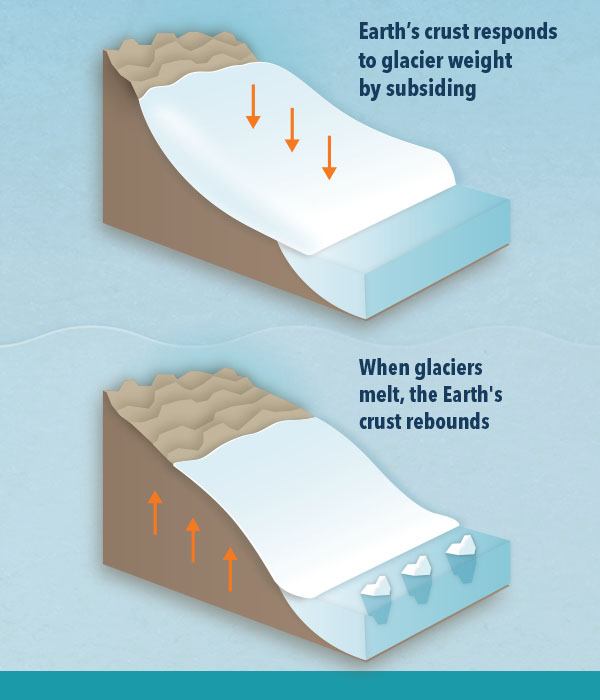
When glaciers melt, the Earth’s crust rebounds (i.e., uplifts) in response to the reduced load, resulting in raised shorelines (i.e., a drop in sea level). In response to melting glaciers, sea levels off the coast of Alaska have decreased by over 13 mm (about 0.5 inches) per year since the 1930s.2
Along the coast, this has resulted in water table changes, property boundary issues, and the drying out of wetlands.

2) Increasing Sea Levels
Most coastal areas are experiencing an increase in sea level due to melting glaciers and the thermal expansion of seawater.
Since the late 1800s, the global mean sea level has risen 21-24 cm (8-9 inches). Perhaps even more alarming, sea-level rise has accelerated—from 1.4 mm per year throughout most of the 20th century to 3.6 mm per year over the first part of the 21st century.3
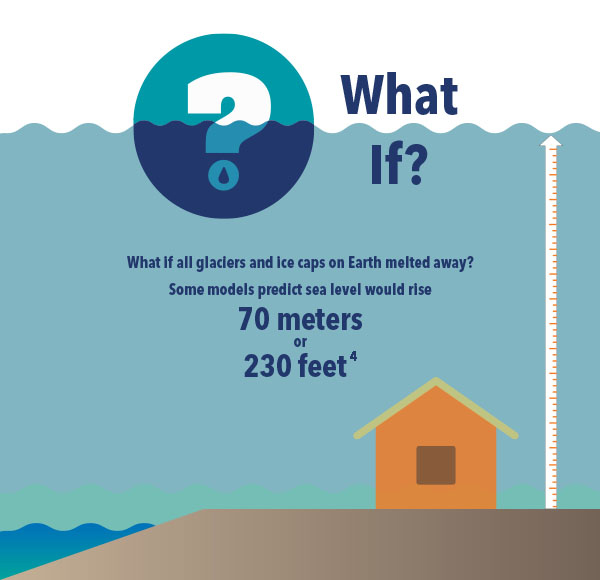
Rising sea levels have already started to wreak havoc. Hurricane storm surges can reach further inland, and regular high-tide flooding (i.e., nuisance flooding) in the U.S. has increased by up to 900% since the 1970s.3
Many coastal areas are in danger of becoming permanently flooded. Depending on the projection model used, sea level may rise between 0.3 meters (1 foot) to nearly 2 meters (6.5 feet) by 2100.1 Floods that were occurring once per century along coastal areas may soon become annual events.

3) Slowing Ocean Currents
Melting glaciers could also cause the Earth’s network of ocean currents to grind to a halt.
The ocean conveyor belt is a system of water currents that flow across the globe. Thermohaline circulation is the driving force behind these currents, as heat (thermos) and salt (haline) impact the density of water—cold, saline water is denser than warm, less saline water. Ocean water moves in response to these density changes, causing currents to form.

In the North Atlantic, an influx of freshwater from melting glaciers is preventing cold water from sinking as quickly as it usually would, ultimately causing the entire conveyor system to slow down. This is problematic, as the conveyor plays a role in weather patterns, delivering nutrients to marine life, and cycling gases.
A sudden, complete collapse of the conveyor is unlikely before 2100, although it is possible if the Greenland Ice Sheet were to melt faster than expected. This would result in abrupt shifts in weather patterns and the water cycle.1
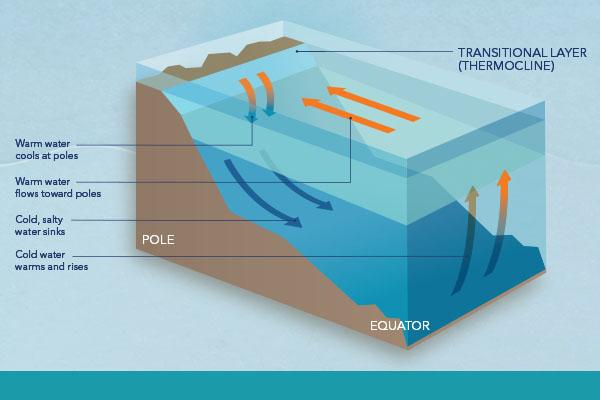
Thermoline Circulation: The driving force behind global currents that heat and cool our globe's oceans.

4) New North Pole
The rotation of the Earth is also starting to change as a result of vast amounts of meltwater entering the oceans.
The Earth has two sets of poles—the magnetic poles are part of the Earth’s magnetic field and are responsible for the function of a compass, while the geographic poles are points on the invisible axis upon which the Earth rotates.
The location of poles can change over time, and the magnetic poles are even known to flip periodically. During the 20th century, scientists noticed the geographic poles drifted a few centimeters per year. While this movement was back and forth, the North Pole was generally moving towards Canada.5
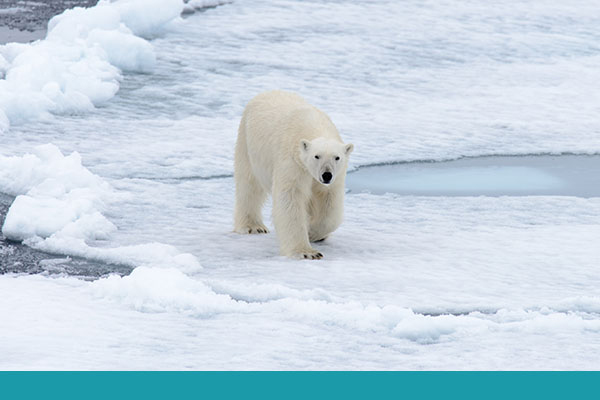
The North Pole is covered in sea ice. Polar bears--one of the few animals that live in this extreme environment--rely on sea ice to survive.
Since 2000, the North Pole has shifted eastward—toward Europe—at an accelerated rate of 10 cm per year, and some scientists believe this change is tied, in part, to melting glaciers. When glaciers melt, mass is lost and redistributed elsewhere on the planet. In response to this change in mass distribution, the Earth’s axis shifts towards where the mass was lost.5
The geographic north pole is considered “true north.” On maps, this is where all longitude lines meet.6 Therefore, if the geographic poles’ location changed enough, maps would need to be redrawn.

5) Earthquakes
Glaciers are heavy, and the Earth rebounds in response to melting glaciers. Tectonic plates—enormous pieces of the Earth’s crust—can more freely move against one another when this weight is removed, increasing the likelihood of earthquakes in the area of the melting glacier.7
The 1979 St. Elias earthquake is an example of tectonic activity that scientists have tied to melting glaciers. Occurring beneath the Chugach and St. Elias Mountains of southeastern Alaska, this significant event registered a 7.2 on the Richter Scale.7
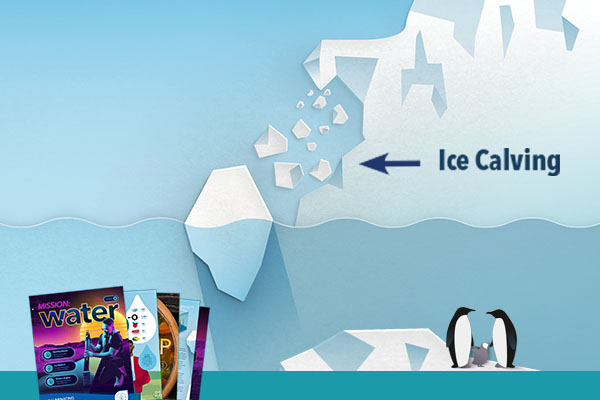
Calving occurs when chunks of ice break away from the edge of a glacier, forming icebergs. The largest iceberg ever recorded was the size of the U.S. state of Connecticut when it formed in March 2000. 7
What Can Be Done?
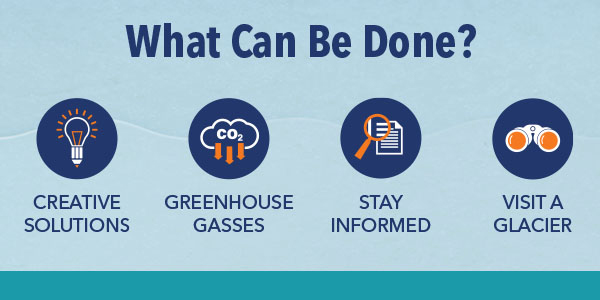
Creative solutions have been proposed to prevent the melting of glaciers—from underwater walls built with robots to enormous cooling tunnels under the ice.8
Realistically though, the only long-term solution is to slow—and eventually stop—the emission of greenhouse gases that drive an increase in global temperatures. Unfortunately, glaciers would continue to melt for decades even if global temperature is stabilized.1
There are respected scientists around the world researching how our world is responding to a changing climate. Staying informed of their findings and educating yourself—and others—using scientific resources can go a long way in driving environmental awareness.
Finally, visit some of the vanishing glaciers firsthand if you can, such as the Muir Glacier, as you may find yourself becoming a strong advocate for these icy giants.

Sources
1. IPCC, AR6 Climate Change 2021: The Physical Science Basis
2. NOAA, Relative Sea Level Trend: 9452210 Juneau, Alaska
3. NOAA, Climate Change: Global Sea Level
4. USGS, How would sea level change if all glaciers melted?
5. National Geographic, Climate Change Is Moving the North Pole
6. Princeton, OA Guide to Map & Compass
7. NASA, Retreating Glaciers Spur Alaskan Earthquakes
8. NBC, Two audacious plans for saving the world's ice sheets
9. NASA, End of the Journey for Iceberg B-15Z?